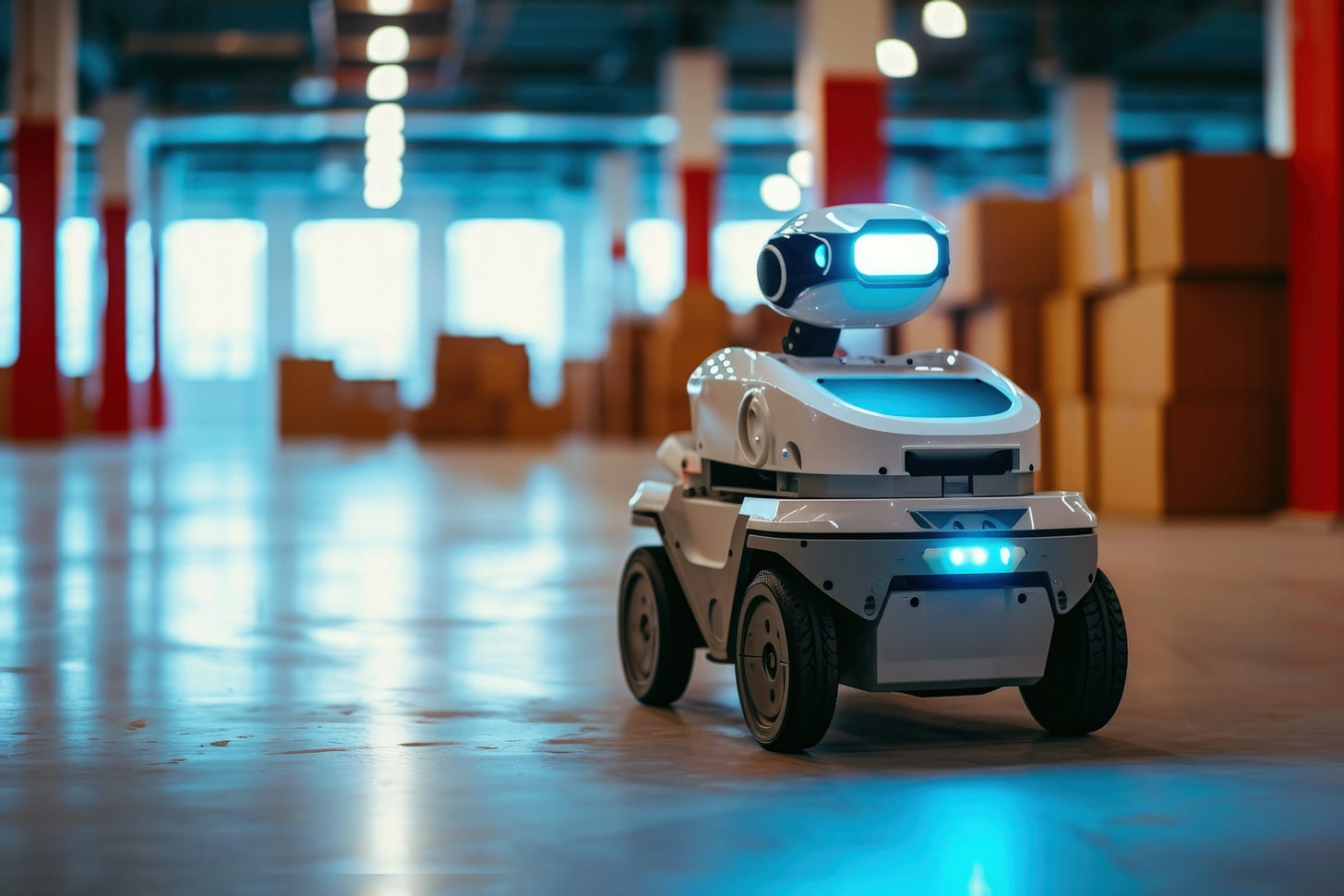Robotics in the spotlight in JPMorgan survey of tech funding
Insights on the latest developments in the world of autonomous mobile robots.
Investment in robotics startups has nearly doubled in four years, jumping from $7 billion in 2020 to more than $12 billion in 2024, according to JPMorgan's latest Applied Technology report. The surge reflects growing demand for AI-powered automation as companies confront persistent labour shortages and seek productivity gains amid economic uncertainty.
The shift toward later-stage funding rounds signals industry maturation. Many of 2024's largest robotics deals targeted companies with proven business models and established customer bases rather than early-stage concepts. Median deal sizes have grown substantially across all funding stages, with late-stage valuations topping $160 million — a sharp increase from previous years.
“This surge likely reflects growing investor interest in robotics, driven by advancements in AI, the expansion of industrial applications and an increased focus by organizations on boosting
productivity through automation,” the authors of the report note, led by Justin Krauss, managing director and head of applied technology at JPMorgan Commercial Banking.
The Bureau of Labour Statistics reports nearly half a million open manufacturing jobs, making labour shortages a primary catalyst for automation adoption.
Federal policy is amplifying private investment. Government agencies allocated $338 billion toward applied technologies in fiscal year 2024, with the Department of Defense continuing to award contracts to robotics startups. The CHIPS and Science Act has reinforced domestic manufacturing capabilities, particularly in semiconductors that power modern robotic systems.
Artificial intelligence is transforming robotics capabilities beyond traditional programmable machines. AI-driven predictive maintenance, intelligent navigation, and human-robot collaboration are reshaping manufacturing floors and supply chains. Physical AI—allowing robots to train in virtual environments before real-world deployment—represents the next frontier in autonomous system development.
Despite the funding surge, challenges remain. Higher interest rates have pressured public market valuations, making initial public offerings less attractive. Instead, 97 percent of exits now occur through strategic acquisitions as established companies race to integrate robotics capabilities. This consolidation trend reflects both market maturation and corporate urgency to automate operations.
The report identifies three robotics categories driving investment growth. Autonomous robotic systems attract the largest share of funding, followed by AI in the physical world applications. Humanoid robotics, while historically receiving minimal investment, captured increased attention in 2024 as several high-profile startups raised substantial capital rounds.
Industrial manufacturers remain the primary adopters, but new sectors are emerging. Construction companies, laboratory operators, and warehouse facilities increasingly deploy robotic solutions. Robotics-as-a-service business models are lowering barriers for small and mid-size enterprises that previously couldn't justify capital investments in automation equipment.
Geopolitical tensions and supply chain disruptions have heightened interest in domestic production capabilities. Robotics enables companies to reshore manufacturing without sacrificing cost efficiency, addressing both economic and national security concerns. Defense applications, particularly autonomous surveillance and drone technologies, represent a growing share of government contracts.
The sustainability angle is gaining importance. Robots improve manufacturing precision, reducing material waste and extending product lifecycles. In renewable energy production — solar panels, electric vehicle batteries, recycling equipment — robotics enables rapid scaling without compromising quality standards.
Market observers note that robotics requires more capital than pure software companies to reach commercial scale. Manufacturing, testing, and regulatory compliance create higher funding requirements. However, successful robotics companies also command premium valuations due to their hardware-software integration and defensible market positions.
Looking ahead, demographic changes in developed economies will likely accelerate robotics adoption. Aging populations in the United States, Japan, China, and Germany are straining labour markets across manufacturing sectors. Robotics offers a path to maintain production capacity and economic growth despite workforce constraints.
As the sector matures from experimental technology to commercial necessity, funding patterns suggest sustained growth ahead.




